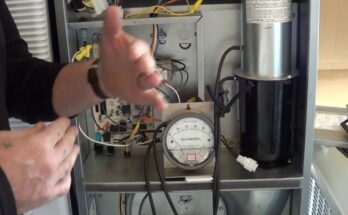To troubleshoot an ignition switch, check for battery power and inspect connections. Ensure the switch turns freely and engages properly.
Ignition switch issues can prevent your vehicle from starting, causing inconvenience and potential safety hazards. The ignition switch is a critical component in your car’s electrical system, responsible for powering essential functions. Common problems include worn contacts, faulty wiring, or a dead battery.
Identifying the root cause can save you time and money. Begin by examining the key and switch for physical damage. Test the battery and ensure all connections are secure. If the switch turns but the engine doesn’t start, consider consulting a professional. Regular maintenance can help avoid ignition switch problems, ensuring your vehicle remains reliable.

Credit: www.carparts.com
Common Ignition Switch Problems
Understanding common ignition switch problems can save you time and money. Ignition switch issues can disrupt your car’s performance. Below, we discuss some typical problems and solutions.
Engine Won’t Start
If your engine won’t start, it could be an ignition switch problem. This issue may show up as the engine cranking but not starting.
Here are some common signs:
- No sound when turning the key
- Dashboard lights not turning on
- Power windows and radio not working
To troubleshoot:
- Check the battery and starter.
- Inspect the ignition switch connection.
- Use a multimeter to test for power.
If these steps don’t help, consider replacing the ignition switch.
Key Won’t Turn
A key that won’t turn is another common issue. This could happen due to a worn-out ignition switch or a problem with the key itself.
Symptoms include:
- Key stuck in the ignition
- Difficulty turning the key
- Steering wheel locked
To fix this:
- Ensure the car is in Park or Neutral.
- Wiggle the steering wheel gently while turning the key.
- Use a spare key if available.
If the key still won’t turn, the ignition switch or lock cylinder may need replacement.

Credit: www.youtube.com
Warning Signs Of A Faulty Ignition Switch
Experiencing issues with your car’s ignition switch can be frustrating. Knowing the warning signs of a faulty ignition switch can help you address the problem before it worsens. This section covers key warning signs to look out for.
Intermittent Stalling
One of the most common signs of a faulty ignition switch is intermittent stalling. Your car may start fine but then stall unexpectedly. This can happen while driving or idling. The engine may suddenly lose power, leaving you stranded. If this occurs frequently, the ignition switch might be the culprit.
Dashboard Lights Flickering
Another warning sign is dashboard lights flickering. When the ignition switch starts to fail, electrical connections can become unreliable. You might notice the dashboard lights flickering or dimming. This indicates an electrical issue that often traces back to the ignition switch.
Keep an eye out for these warning signs. Early detection can save you from more significant issues down the road.
Tools Needed For Troubleshooting
Troubleshooting an ignition switch requires the right tools. Having the correct tools ensures a smooth and effective process. This section will cover the essential tools needed for ignition switch troubleshooting.
Basic Hand Tools
Basic hand tools are vital for ignition switch troubleshooting. These tools help with disassembly and inspection tasks.
- Screwdrivers: Both flathead and Phillips screwdrivers are necessary.
- Wrenches: A set of wrenches is useful for various bolts and nuts.
- Pliers: Pliers aid in gripping and holding small parts.
- Socket Set: A socket set makes removing bolts easier.
Diagnostic Equipment
Diagnostic equipment helps identify ignition switch issues. These tools are crucial for pinpointing electrical problems.
- Multimeter: A multimeter measures voltage, current, and resistance.
- Test Light: A test light checks electrical circuits for power.
- OBD-II Scanner: This scanner reads error codes from the car’s computer.
Having both basic hand tools and diagnostic equipment is essential. These tools ensure you can effectively troubleshoot ignition switch problems.
Step-by-step Troubleshooting Guide
Troubleshooting an ignition switch can seem daunting. But with a clear guide, it becomes manageable. This guide helps you find and fix ignition switch issues.
Initial Checks
Before diving deep, perform some initial checks. These quick steps can often identify the problem.
- Check the Battery: Ensure the battery is charged. A weak battery can mimic ignition switch problems.
- Inspect Fuses: Look for blown fuses. Replace any faulty ones.
- Key Condition: Examine the key. A worn key might not work properly.
- Check Connections: Ensure all wiring connections are tight.
Detailed Inspection
If the initial checks don’t reveal the problem, proceed to a detailed inspection.
- Test the Ignition Switch:
Use a multimeter to check the switch. Measure the voltage when the key is turned.
- Check for Corrosion:
Inspect the switch and wiring for rust. Clean any corroded parts.
- Inspect the Starter Motor:
Ensure the starter motor is functioning. A faulty starter can cause issues.
- Examine the Ignition Coil:
Test the ignition coil for proper function. Replace it if necessary.
By following these steps, you can systematically identify and resolve ignition switch problems. Ensure each step is done carefully. This will help you find the issue quickly and effectively.
Simple Fixes For Minor Issues
Many ignition switch problems are simple to fix. You can solve them without a mechanic. Here are some easy steps to troubleshoot minor issues.
Lubricating The Keyhole
A sticky keyhole can cause trouble. Lubricate it for smooth operation. Follow these steps:
- Get a can of spray lubricant. Make sure it is safe for locks.
- Insert the straw of the spray can into the keyhole.
- Spray a small amount into the keyhole.
- Insert and turn the key several times to spread the lubricant.
Always use a lubricant made for locks. WD-40 or graphite powder works well.
Checking Electrical Connections
Loose or corroded electrical connections can cause ignition issues. Check and fix them easily:
- Locate the ignition switch wiring under the steering column.
- Inspect for loose or disconnected wires.
- If you find loose wires, reconnect them securely.
- Check for corrosion on the connectors. Clean them if needed.
Use a multimeter to test electrical connections. Make sure they have proper voltage.
| Action | Description |
|---|---|
| Lubricate Keyhole | Use spray lubricant to ease key movement |
| Check Electrical Connections | Ensure all wires are secure and clean |
These simple steps can solve many ignition switch problems. Keep your car running smoothly and avoid costly repairs.
When To Seek Professional Help
Troubleshooting an ignition switch can be tricky. Sometimes, the problem may require professional assistance. Knowing when to seek help is crucial. Here are some scenarios when it’s best to consult a professional.
Complex Electrical Problems
Modern cars have intricate electrical systems. If the ignition switch issues involve complex electrical problems, it’s wise to seek help. Professional mechanics have the tools and knowledge to diagnose these issues accurately.
Signs of complex electrical problems include:
- Frequent fuse blows
- Unusual electrical noises
- Dashboard lights flickering
Attempting to fix these issues without expertise can lead to further damage.
Persistent Issues
Sometimes, ignition switch problems can persist despite your best efforts. If the issue returns after troubleshooting, it’s time to consult a professional. They can identify hidden issues that you might miss.
Persistent issues might include:
- Car not starting consistently
- Key getting stuck in the ignition
- Intermittent power loss
These issues can indicate deeper problems. Professional help ensures a thorough and lasting fix.
| Problem | When to Seek Help |
|---|---|
| Complex Electrical Problems | Frequent fuse blows, unusual noises, flickering lights |
| Persistent Issues | Car not starting, key stuck, power loss |
Knowing when to seek professional help can save time and money. It ensures your car remains in good working condition.
Preventive Maintenance Tips
Keeping your ignition switch in top shape prevents unexpected car problems. Follow these preventive maintenance tips to ensure your vehicle starts smoothly every time.
Regular Key Cleaning
Dirt and debris on your car key can cause ignition problems. Regularly clean your key to avoid these issues. Use a soft cloth and mild cleaner to wipe your key. Be gentle to avoid damaging the key.
Use a small brush to clean any grooves on the key. Clean keys fit better in the ignition switch, reducing wear and tear.
Avoiding Heavy Keychains
Heavy keychains can strain your ignition switch. Too much weight pulls on the switch, causing it to wear out faster. Use a lightweight keychain to prevent this problem.
Keep your keychain simple and light. Remove unnecessary items from your keychain. This helps extend the life of your ignition switch.
| Preventive Maintenance Tip | Action |
|---|---|
| Regular Key Cleaning | Use a soft cloth and mild cleaner |
| Use a Small Brush | Clean grooves carefully |
| Avoid Heavy Keychains | Use a lightweight keychain |
| Keep Keychain Simple | Remove unnecessary items |
Follow these simple tips to keep your ignition switch in good condition. A little maintenance goes a long way in preventing costly repairs.

Credit: www.youtube.com
Frequently Asked Questions
How Can You Tell If Your Ignition Switch Is Bad?
A bad ignition switch can cause your car not to start. Look for flickering dashboard lights, stalling, and difficulty turning the key.
How Do You Start A Car With A Bad Ignition Switch?
To start a car with a bad ignition switch, turn the key to the “on” position, then use a remote starter switch to crank the engine.
How Do You Reset The Ignition Switch?
Turn off the vehicle and disconnect the battery. Wait for 10 minutes. Reconnect the battery. Turn the ignition key to the “ON” position without starting the engine. Wait for the dashboard lights to reset. Turn the key back to “OFF” and then start the car normally.
What Would Cause The Ignition Switch To Lock Up?
Worn keys, a damaged ignition cylinder, or a steering wheel lock can cause the ignition switch to lock up.
Conclusion
Troubleshooting an ignition switch can save time and money. Follow the steps outlined to diagnose issues efficiently. Regular maintenance and prompt repairs ensure your vehicle runs smoothly. Always consult a professional if unsure. Keeping your ignition system in check guarantees a reliable and safe driving experience.



